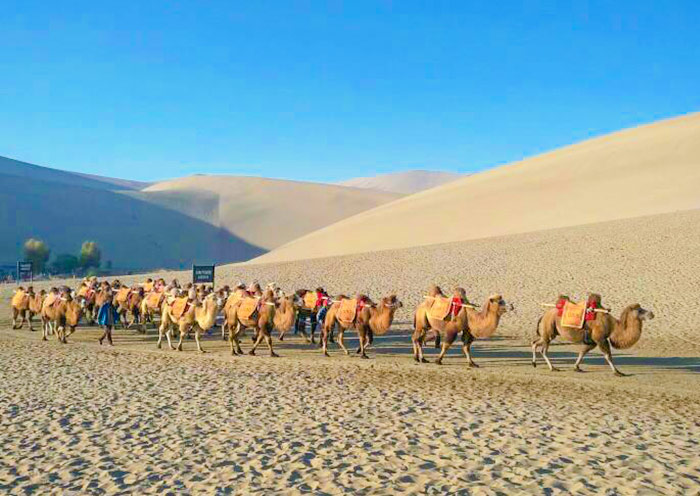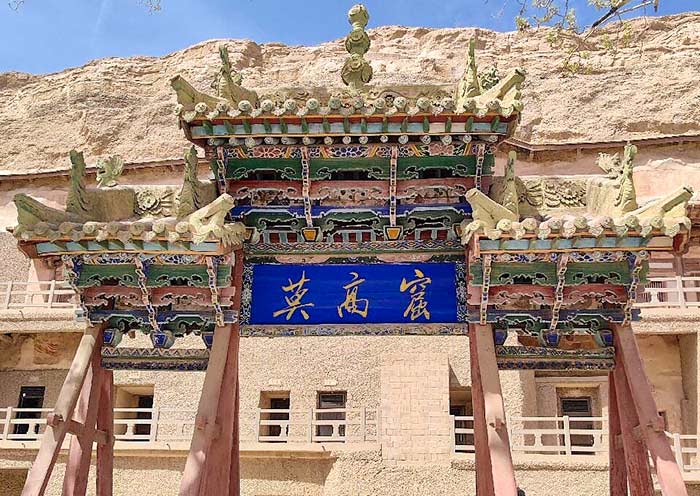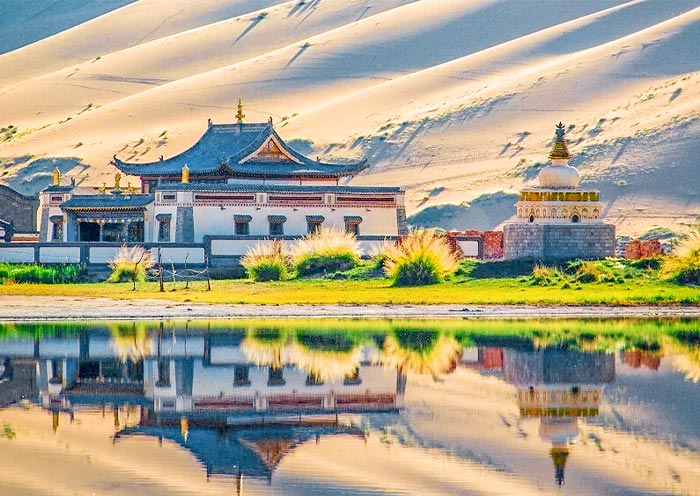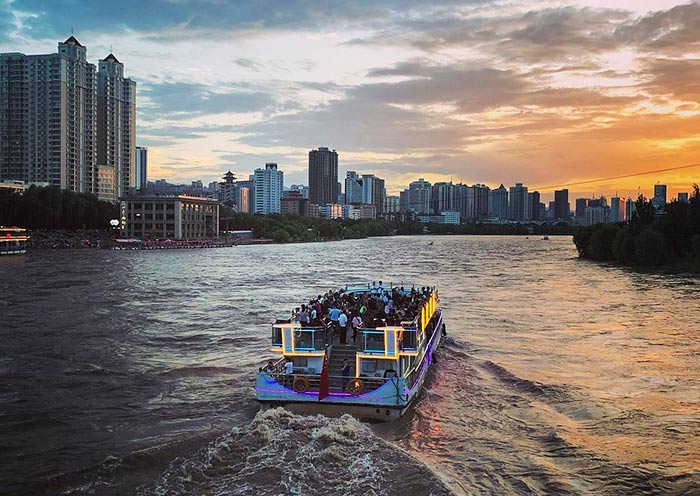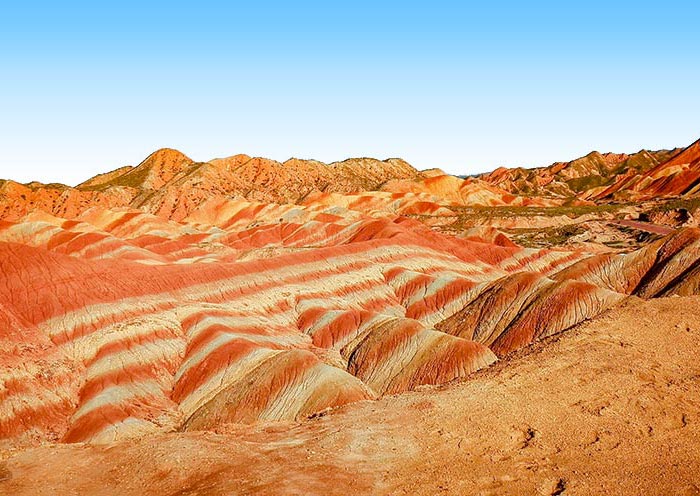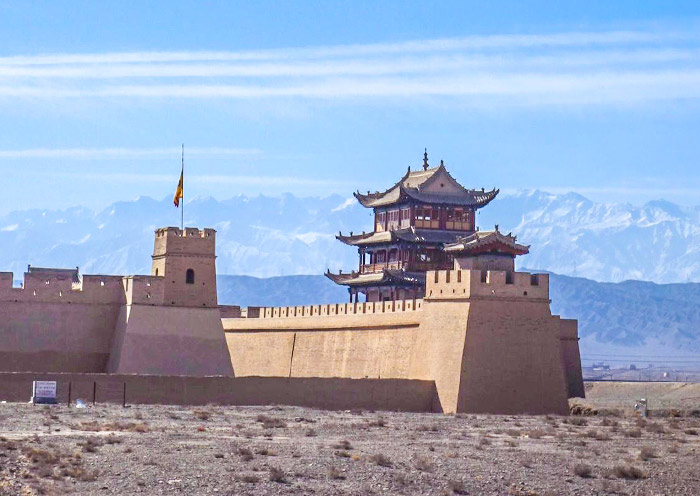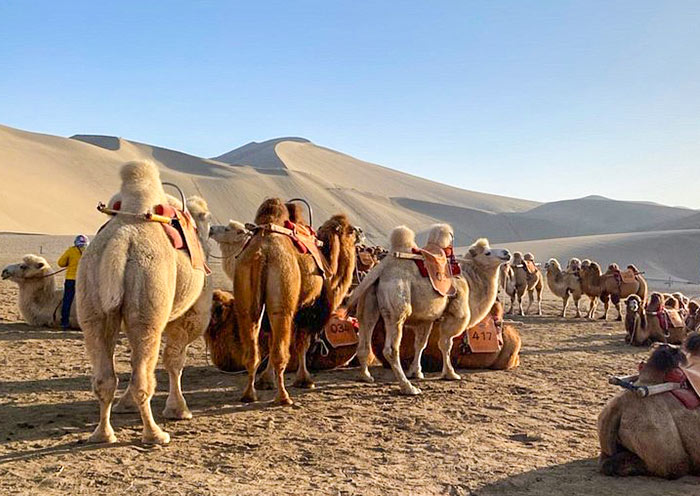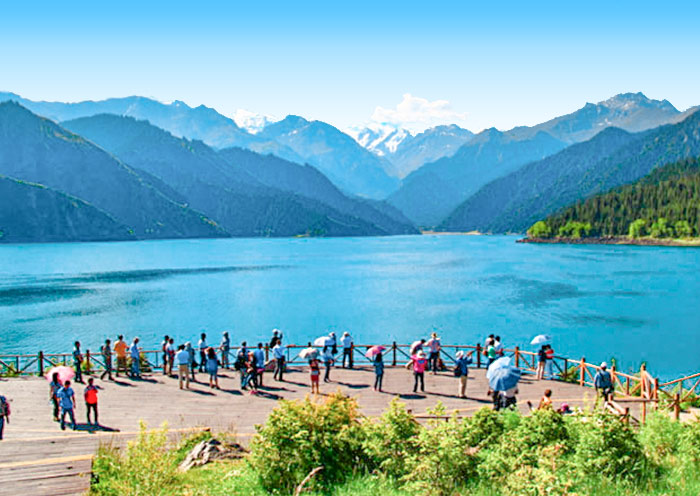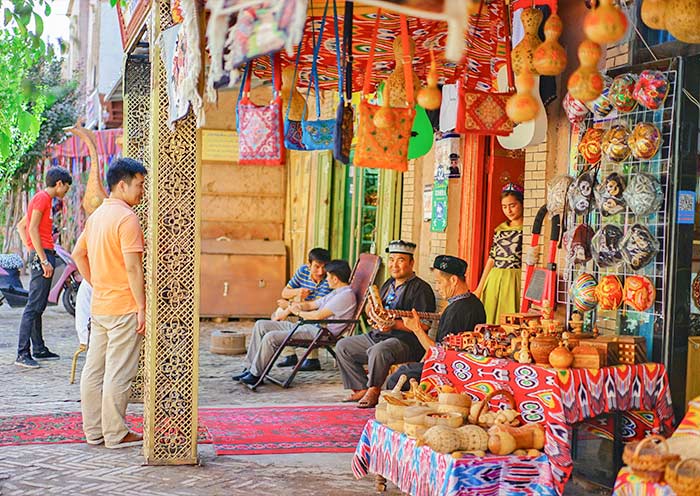Hexi Corridor Facts

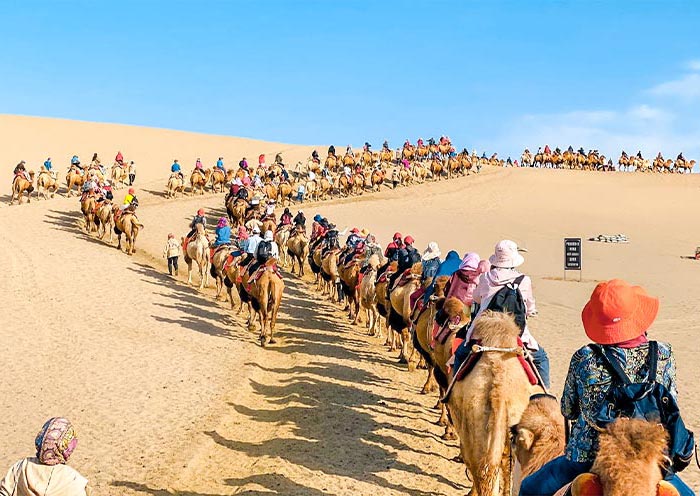
Also known as: Gansu Corridor
Chinese Name: 河西走廊
Length: Approximately 1,200 kilometers (746 miles)
Area of Hexi Corridor: from Lanzhou to Dunhuang
Key Cities: Lanzhou, Wuwei, Zhangye, Jiuquan, Jiayuguan, Dunhuang
Historical Figures: Zhang Qian, Kumarajiva, Xuanzang, Huo Qubing
Best Time to Visit: April to October
Where is the Hexi Corridor: Area of Hexi Corridor
The Hexi Corridor is a region in Northwest China, and its name comes from its corridor-like shape and its location to the west of the Yellow River (Hexi literally means "west of the river"). This corridor is a natural passageway, bordered by impassable mountains and deserts.
To give you a better picture, the Hexi Corridor stretches about 1200 kilometers long, and varies in width from 40 to 100 kilometers. It starts near the steep slopes of the Wuwei Mountains close to Lanzhou and extends all the way to Yumen Pass near Dunhuang in Gansu. To the north, you've got the Gobi Desert, and to the south, the towering Tibetan Plateau. Essentially, it covers what you'd call the western part of Gansu Province.
Hexi Corridor History: What is the Significance of the Hexi Corridor?
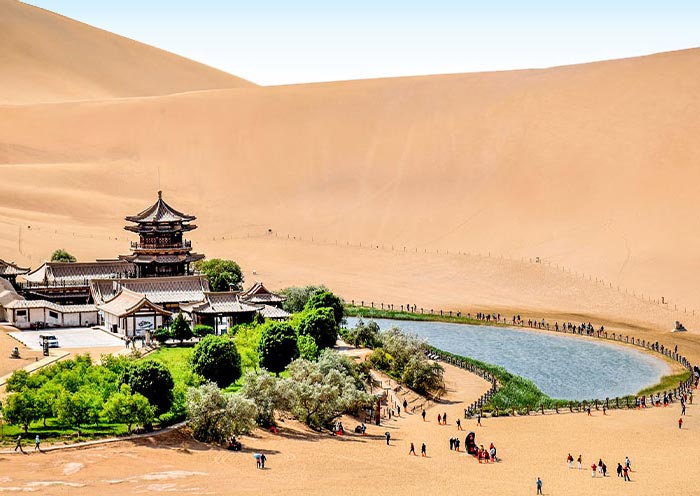
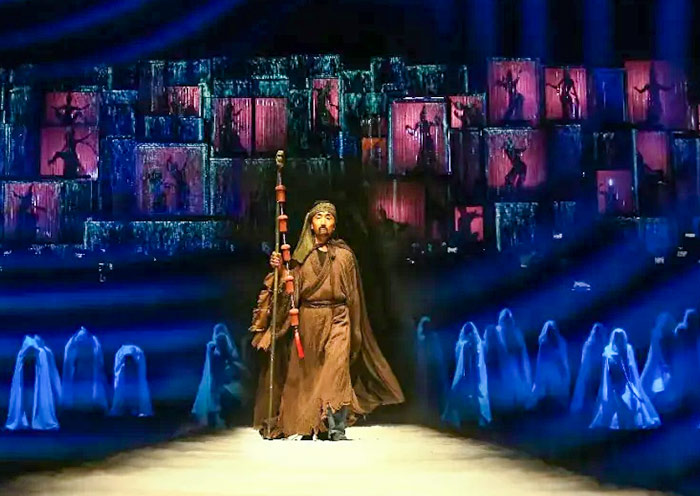
Due to its natural geographic advantages, the Hexi Corridor has always been a major gateway linking China with the Western world. It has been pivotal in promoting the exchange of goods, ideas, and cultures between China and regions like Central Asia, the Middle East, and Europe.
A Brief Timeline:
- 138 BC (The Beginning): Emperor Wu of Han sent Zhang Qian to the Western Regions, paving the way for what would become the Silk Road.
- 121 BC (Silk Road Established): With the establishment of the counties of Wuwei, Zhangye, Jiuquan, and Dunhuang, the corridor opened up.
- 220-589 AD (Introduction of Buddhism): Buddhism entered central China through the Hexi Corridor, making Dunhuang a key center for Buddhism spreading east.
- 618-907 AD (Golden Age): The corridor thrived as a critical Silk Road passage, reaching the height of commercial and cultural exchanges. This era also saw the peak of cave temple construction.
- 960-1912 AD (Decline): As maritime Silk Road routes gained prominence, the Hexi Corridor's role in trade and cultural exchanges gradually diminished.
- Today: It's one of China's hottest tourist routes.
Silk Road Hub: This corridor was a vital hub on the Silk Road, the network of trade routes stretching from China to the Mediterranean. It facilitated the transport of silk, porcelain, tea, spices, and precious metals.
Cultural Exchange: The Hexi Corridor was a vibrant conduit for cultural exchange. Travelers and merchants from various civilizations passed through, bringing their customs, religions, and knowledge. Buddhism also made its way into China via this route. This interaction fueled the development of new ideas and innovations.
Military Significance: Due to its strategic location, the Hexi Corridor also served as an important military outpost, making it a coveted spot for many historical conflicts.
Hexi Corridor Cities: Gateway of the Silk Road

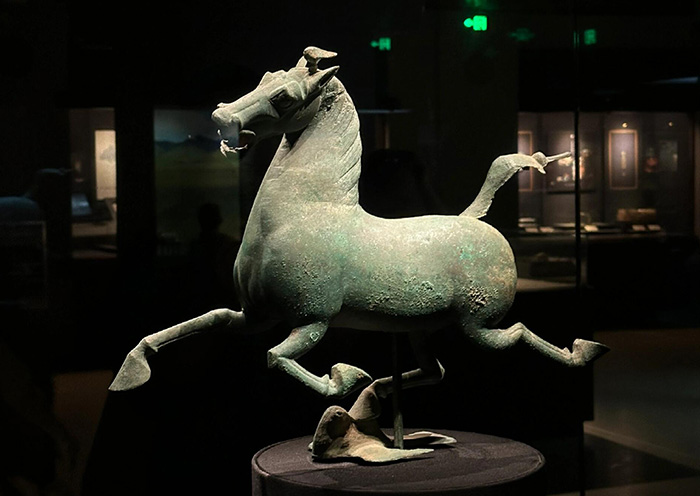
Lanzhou (兰州) - The capital of Gansu Province, Lanzhou is a major hub at the eastern end of the Hexi Corridor, buzzing with traffic and industrial activity. It's your gateway into this historic region.
Wuwei (武威)- Famous for its rich historical tapestry and cultural treasures, including the Tianti Mountain Grottoes. It's like stepping back in time!
Zhangye (张掖)- Known for the Giant Buddha Temple, home to one of China's largest indoor reclining Buddha statues, and the Zhangye National Geopark, where the landscape is a swirl of color—often described as Rainbow Mountains.
Jiuquan (酒泉)- An important ancient military outpost with a deep history as part of the Silk Road. It's steeped in the kind of history that tells tales of ancient caravans.
Jiayuguan (嘉峪关)- Located at the Hexi Corridor's narrowest point, Jiayuguan is home to the Jiayuguan Fort, an ancient military stronghold and the westernmost end of the Great Wall of China. It's literally the edge of ancient Chinese civilization.
Dunhuang (敦煌)- Famous for the Mogao Caves, a UNESCO World Heritage site filled with over a thousand years of spectacular Buddhist art. Nearby are the ancient towns of Yangguan and Yumenguan, once major frontier garrisons of ancient China.
Top Attractions & Things to Do along the Hexi Corridor
Explore Mogao Caves in Dunhuang
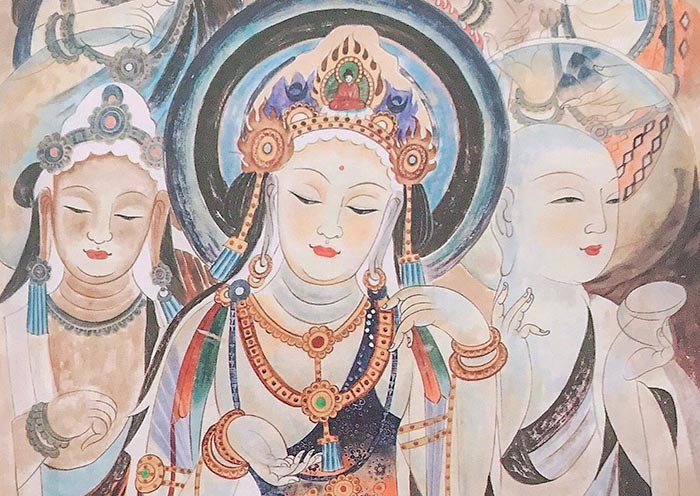

The Mogao Caves in Dunhuang are the rock stars of the Hexi Corridor and a must-see for any traveler's bucket list. This UNESCO World Heritage site features nearly 500 caves adorned with exquisite murals and statues that span a millennium, showcasing a rich tapestry of religious beliefs and artistic achievements.
Dubbed a treasure trove of classical Chinese art, the caves offer visitors a chance to marvel at intricate paintings and exquisite sculptures that tell stories from the Buddha's life, as well as depict scenes of daily life. These depictions provide a fascinating glimpse into the lives of ancient Silk Road travelers.
Traversing Key Passages Along the Ancient Silk Road

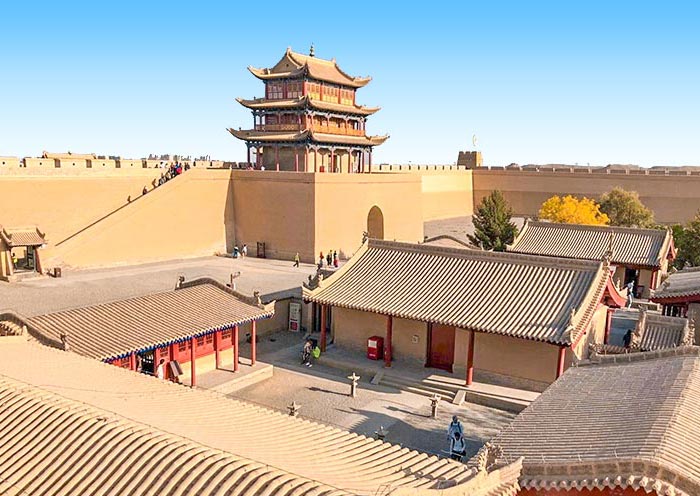
The Hexi Corridor was once a bustling trade hub on the Silk Road, with its major passages playing a crucial role in linking China with the Western world. Yangguan Pass, Yumen Pass, and Jiayuguan Pass are among the most important gateways in this region.
Travelers can explore the ruins of these ancient defensive fortifications, experiencing the processes ancient travelers went through and understanding the challenges faced by those on this legendary trade route. Additionally, Yangguan, Yumen, and Jiayuguan are three of the thirteen major passes along the Great Wall, with Jiayuguan serving as the westernmost end.
Yumen Pass (Jade Gate): Once a bustling trade point for jade from Central Asia, today it stands as a poignant reminder of the desolate yet crucial routes traversed by traders.
Yangguan Pass: Now in ruins, this pass was a vital exit for those heading to the Western Regions. A visit here, with its museum and sweeping dunes, really conjures up the spirit of old.
Jiayuguan Pass: This well-preserved fort marks the old frontier of the Chinese empire. Climbing its walls offers stunning desert views and a tangible sense of history at the edge of the ancient world.
Marveling at the Natural Beauty of the Zhangye Danxia National Park
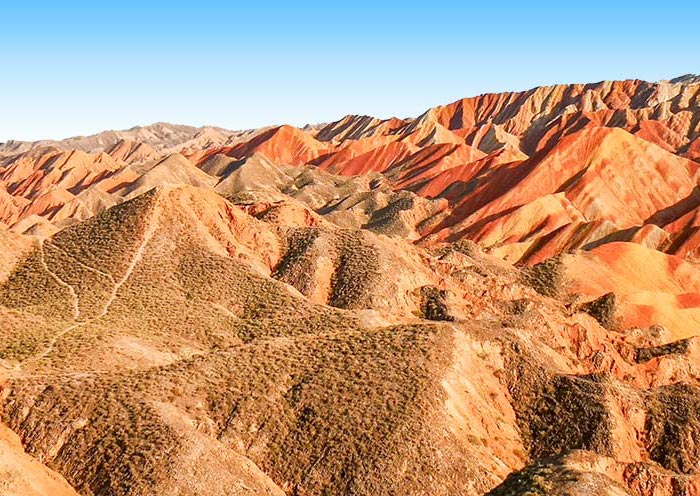
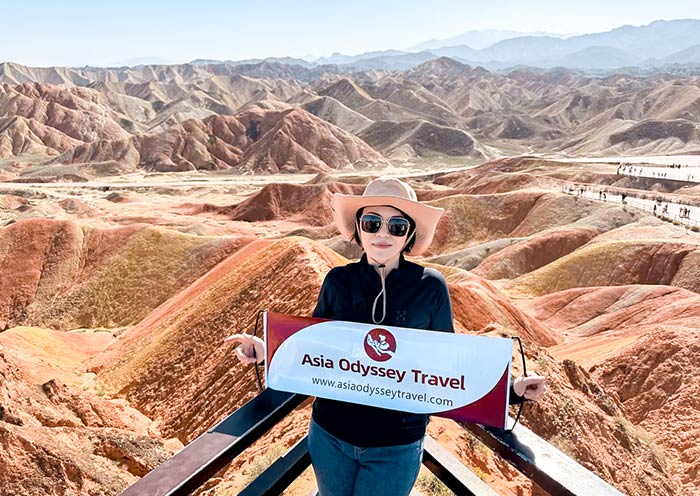
The Zhangye Danxia National Park, a UNESCO World Heritage Site, is a geological marvel that will leave you awestruck. Located in the Hexi Corridor, this park boasts a breathtaking array of colorful, layered rock formations that resemble strokes of a giant artist's brush. The vibrant hues, ranging from crimson and orange to purple and green, are the result of millions of years of geological processes, creating a unique and captivating landscape.
As you explore the park, you'll encounter towering cliffs, deep canyons, and winding valleys, each painted with a different palette of colors. The contrast between the vibrant rock formations and the surrounding desert scenery is truly mesmerizing. Whether you're hiking through the park or simply taking in the view from a lookout point, the Zhangye Danxia National Park offers a truly unforgettable experience.
Venturing at the Singing Sands and Crescent Spring
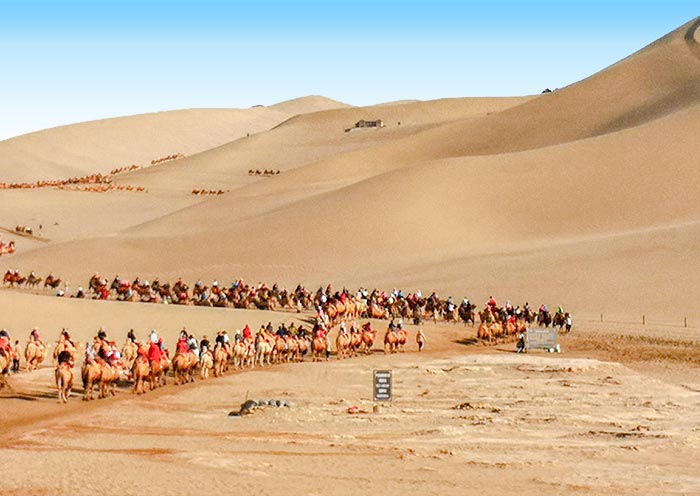

The Singing Sands and Crescent Spring, located in the Mingsha Mountain Scenic Area, are a must-see attraction in the Hexi Corridor. The Singing Sands are a phenomenon where the sand dunes emit a musical sound when disturbed, creating a mesmerizing and otherworldly experience. At the base of the dunes lies the Crescent Spring, a crystal-clear oasis that stands in stark contrast to the surrounding desert landscape.
Visitors can enjoy a variety of activities in this unique landscape. Camel rides offer a traditional and leisurely way to explore the dunes, while sandboarding provides an adrenaline rush for the more adventurous. As the day ends, the sunset over the dunes is not to be missed, with the sky and sands aflame in brilliant colors. Whether you're seeking adventure, tranquility, or a bit of both, the Singing Sands and Crescent Spring offer an unforgettable desert experience that captivates all who wander here.
Discovering Temples and Caves in Hexi Corridor
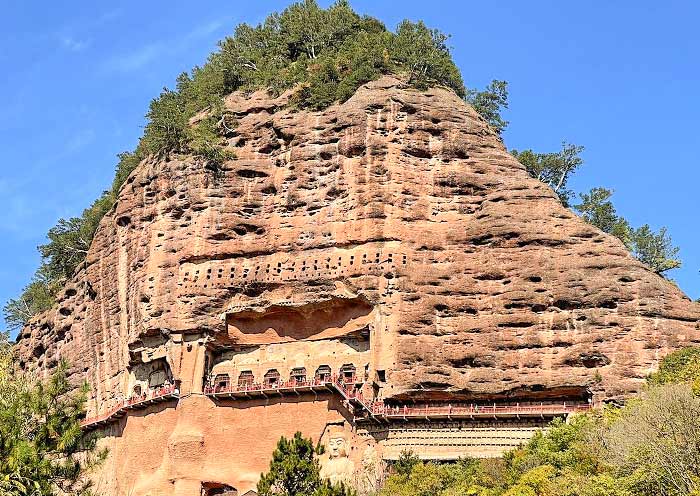

The Hexi Corridor is also dubbed the "Corridor of Grottoes," packed with an incredible number of caves and temples that make it a treasure trove of religious and cultural heritage. Diving into these sacred spots offers a deep insight into the spiritual and artistic achievements of the region's ancient civilizations.
Yulin Caves: Located in today's Guazhou County, these caves are often mentioned in the same breath as the Mogao Caves, making them one of the essential Buddhist cave groups in the corridor.
Mati Temple Grottoes: Perched on the cliffs of the Qilian Mountains, this temple perfectly blends Buddhist art with stunning natural scenery. The temple is famous for its caves carved into the rock, offering a unique spiritual retreat.
Tiantishan Grottoes: Situated in Wuwei, these are some of the earliest grottoes in the region, earning the nickname "the ancestor of grottoes." They're a fantastic peek into the origins of Buddhist cave art in the area.
Wenshu Mountain Grottoes: Located southwest of Jiayuguan, these grottoes focus primarily on Buddhist sculptures, offering a serene glimpse into the region's spiritual past.
Shuilian Cave Grottoes: Found in Minqin County, Wuwei, these caves are renowned for their captivating natural beauty paired with intricate Buddhist art.
Bingling Temple Grottoes: Although slightly off the beaten path of the Hexi Corridor in Yongjing County, Linxia Hui Autonomous Prefecture, this site is well worth the detour. With a rich history and exquisite sculptures, it stands out as one of Gansu's celebrated cave temples.
Giant Buddha Temple in Zhangye: Famous for housing Asia's largest reclining Buddha, this temple doubles as a museum showcasing Silk Road artifacts. It's a deep dive into the historical and spiritual exchanges that shaped this region.
| Cities | Top Attractions |
|---|---|
| Lanzhou | Gansu Provincial Museum, Zhongshan Bridge, Baita Mountain Park |
| Wuwei | Leitai Tomb of Han Dynasty, Tianti Mountain Grottoes, Wuwei Confucian Temple |
| Zhangye | Zhangye Danxia National Geopark, Giant Buddha Temple, Wooden Pagoda Temple |
| Jiayuguan | Jiayuguan Fort, Overhanging Great Wall, Wei-Jin Art Gallery |
| Dunhuang | Mogao Caves, Crescent Lake and Singing Sands Mountain, Yumen Pass and Yangguan Pass |
How Long to Stay in Hexi Corridor: Suggested Travel Length & Itinerary
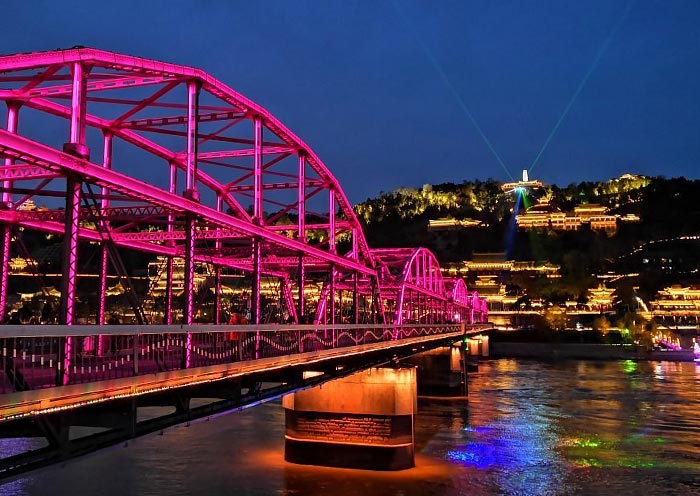
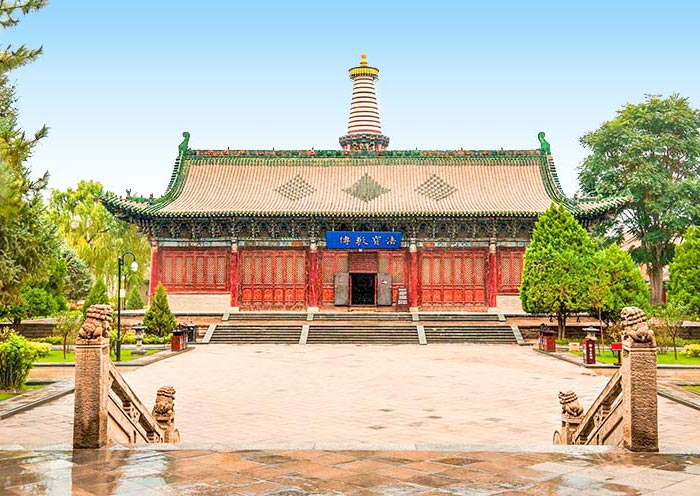
The Hexi Corridor is a treasure trove of history, culture, and stunning landscapes. But how long should you spend exploring this ancient Silk Road? Well, it all depends on how much time you've got and what you want to see.
A Quick Overview: If you're short on time, you could easily spend 2-3 days exploring one city in the Hexi Corridor. But for a more comprehensive experience, aim for around 6-8 days.
Lanzhou (1-2 Days)
Spend a day or two in Lanzhou getting to know the local gems. Hit up the Gansu Provincial Museum to brush up on some history, take a leisurely stroll across the iconic Zhongshan Bridge, and chill out in the peaceful Baita Mountain Park.
Wuwei (1-2 Days)
In Wuwei, give yourself a couple of days to be wowed by ancient wonders. Don't skip the Leitai Tomb of the Han Dynasty, famous for its galloping horse sculpture. The Tiantishan Grottoes and Wuwei Confucian Temple are also must-sees, offering a peek into China's rich spiritual and historical past.
Zhangye (2-3 Days)
Zhangye demands a bit more time, thanks to the stunning Danxia National Geopark, known for its vibrant, colorful landscapes. Spend a day exploring the park and another day visiting the Giant Buddha Temple and the Wooden Pagoda Temple to soak in the area's natural and man-made marvels.
Jiayuguan (1-2 Days)
Check out Jiayuguan Fort, an indispensable part of the Great Wall, to delve deep into China's military history. The nearby Overhanging Great Wall is another can't-miss attraction.
Dunhuang (2-3 Days)
The Mogao Caves are an absolute highlight of any trip to the Hexi Corridor with their dazzling ancient Buddhist art. Don't forget to visit the enchanting Crescent Lake and Singing Sands Mountain for some desert fun. If you've got a bit more time, why not check out the ancient Jade Gate Pass or marvel at the natural wonders of the Yadan National Geopark?
Suggested Itinerary of Silk Road Hexi Corridor


Day 1: Arrival in Dunhuang
Day 2: Exploring Dunhuang: Kick off your day with a visit to the stunning Mogao Caves, a World Heritage site packed with ancient Buddhist art. Later, shift the sands of time at the Singing Sand Mountains and take a moment to reflect by the picturesque Crescent Spring.
Day 3: Dunhuang to Jiayuguan: Travel to Jiayuguan to explore the dramatic Overhanging Great Wall and the imposing Jiayuguan Pass, part of the Great Wall's heritage. Opt to dive deeper into history with a visit to the Great Wall Museum if you're up for it.
Day 4: Jiayuguan to Zhangye: Start your day at the Jiayuguan Big Buddha Temple before heading off to marvel at the otherworldly landscapes of Zhangye National Geopark, famously known for its colorful, layered rock formations.
Day 5: High-Speed Rail from Zhangye to Lanzhou: Once in Lanzhou, stroll across the iconic Zhongshan Bridge, unwind in Baita Park, and snap a pic with the Mother Statue of the Yellow River. Don't miss out on the traditional waterwheel display at the Waterwheel Park.
Day 6: Departure from Lanzhou
Looking for more ideas and plans for your Silk Road adventure in the Hexi Corridor? Get in touch with ASIA ODYSSEY TRAVEL to check out more Gansu travel packages tailored just for you. On a budget? Take a peek at our Silk Road group tour deals. Whether you're after a custom getaway or a cost-effective group tour, we've got you covered for an epic journey along this legendary route.
Best Time to Visit Hexi Corridor in China
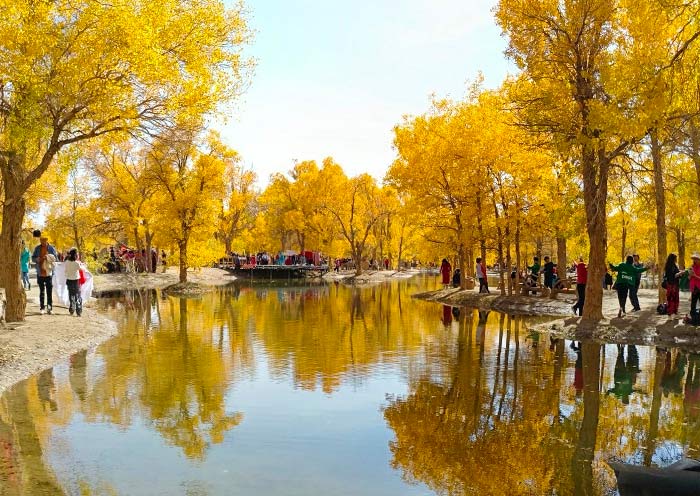

The best times to visit the Hexi Corridor are in the spring (May to June) and autumn (September to November), particularly in May, June, September, October, and November. During these months, the weather in the Hexi Corridor is dry and mostly sunny, with pleasant temperatures averaging between 15-25°C (59-77°F) – perfect for outdoor activities.
Autumn, especially from late September to mid-October, is a spectacular time to visit as it's the prime season for viewing the Poplar forests, when the leaves turn a stunning golden yellow, creating breathtaking landscapes. So, if you're planning a trip, these months are your best bet for great weather and gorgeous natural scenery.
How to Get to Silk Road Hexi Corridor
When planning your trip along the Silk Road's Hexi Corridor, getting your transport sorted is key. Generally, you can kick things off in Lanzhou or Dunhuang. This way, you can make a smooth one-way journey without any backtracking. Think of it as a straight shot through history, starting from either end of this legendary corridor. Whether you're heading east to west or the other way around, both cities are perfect launch pads for your adventure.
Starting Point: Lanzhou


Lanzhou, the capital of Gansu Province, serves as the primary gateway to the Hexi Corridor. Most travelers begin their journey here.
By Air: Lanzhou has its own airport, Lanzhou Zhongchuan Airport, which is well-connected with major Chinese cities like Beijing, Shanghai, and Guangzhou, offering frequent flights. The airport is approximately 70 kilometers from the city center, with travel time by car or airport bus taking about an hour.
By Train: Lanzhou is a key hub in China's extensive railway network. High-speed trains from major cities can quickly and comfortably bring you to Lanzhou. The main railway stations are Lanzhou Station and Lanzhou West Station.
Lanzhou Station is closer to the city center, about 3 kilometers away, typically a 10-minute drive. Lanzhou West Station is located at the address: Xijin West Road, Qilihe District, Lanzhou, about 20 kilometers from the city center, and it takes around 30 minutes by car or public transport.
Starting Point: Dunhuang
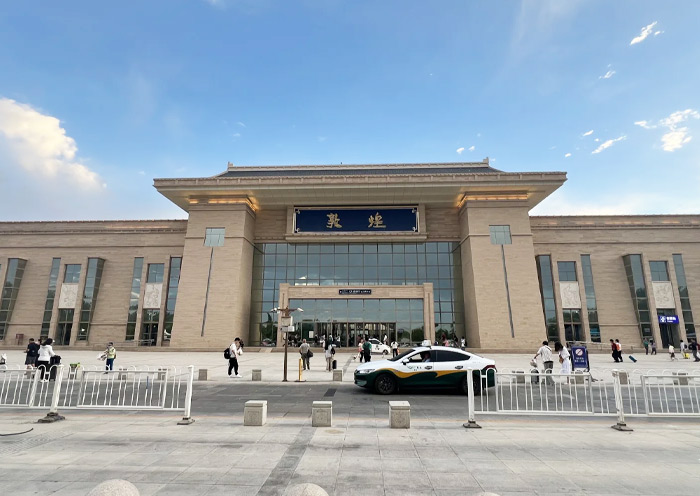

As a significant city on the Silk Road within the Hexi Corridor, Dunhuang is accessible by both plane and train.
By Air: Domestic flights from major cities like Xi'an, Shanghai, Beijing, Chengdu, and Urumqi have direct flights to Dunhuang Mogao International Airport, allowing convenient access. The airport is located about 13 kilometers from the city center, with travel time typically around 20 minutes by car.
By Train: There are high-speed and regular trains from major cities to Dunhuang. The main train station is Dunhuang Train Station, which is about 12 kilometers from the city center. Liuyuan Train Station, located about 130 kilometers from Dunhuang, can also serve as an alternative for travelers, with buses and taxis available to reach Dunhuang, taking about 2 hours.
How to Travel around Gansu Corridor
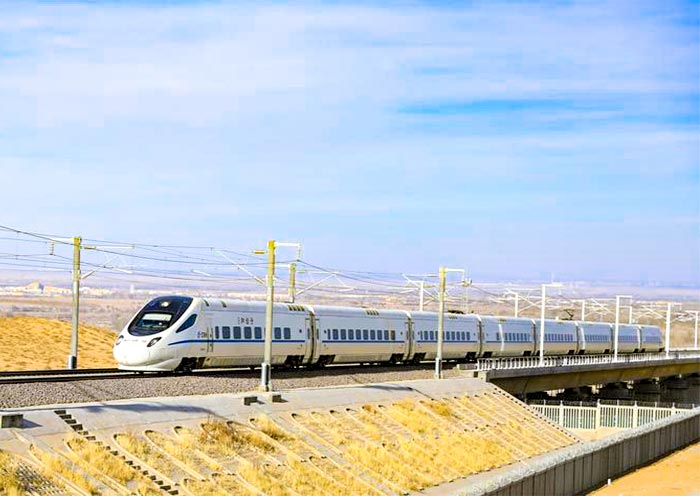

Spanning over 1,200 kilometers, the Hexi Corridor stretches a long way across! The distances between its major cities can vary quite a bit. Take, for example, from Lanzhou to Dunhuang - the corridor's two endpoints—which clocks in at around 1,080 kilometers.
Lanzhou to Zhangye: Ca,530 km, 3-6 hours
Lanzhou to Jiayuguan: About 776 km, 4-8 Hours
Zhangye to Jaiyuguan: Approximately 243 km, 1-3 hours
Dunhuang to Jaiyuguan: About 370 km, 4-5 hours
By Flight: Fastest Way
With over 1000 kilometers separating the corridor's ends, Lanzhou and Dunhuang, flying is your quickest option. Lanzhou isn't just a hub for the corridor; it also offers direct flights to other key stops like Zhangye and Jiayuguan. Plus, you can catch a flight from Jiayuguan to Dunhuang, making air travel a breeze.
By High-Speed Train
The major cities along the corridor, from Lanzhou all the way to Dunhuang, are well-connected by high-speed train. The longest stretch- Lanzhou to Dunhuang - takes about 7.5 to 8.5 hours, so you can zip across the corridor in less than a day.
By Overnight Train: Budget Friendly
For those watching their wallets, overnight trains between cities in the corridor are a budget-friendly dream. It's a slower ride, but you save on a night's accommodation.
By Road: A Silk Road Adventure
The G30 Lianyungang-Khorgos Expressway stretches along the corridor, offering a smooth journey through breathtaking landscapes. You'll get uninterrupted views of the Gobi Desert and the surrounding mountains – perfect for those who want to take it slow and soak in every sight.
Where to Stay along Gansu Corridor
Lanzhou: In Lanzhou by staying near the city center. Look for hotels along the Yellow River, where you can enjoy beautiful river views and easy access to attractions like the Zhongshan Bridge and local markets. Staying in this area makes it convenient to explore the city and try the famous Lanzhou beef noodles.
Wuwei: In Wuwei, choose a hotel near the city center to immerse yourself in local culture. Being close to attractions like Leitai Han Tomb and Haizang Temple allows you to explore the city's historical sites comfortably. This central location also provides easy access to local dining options.
Zhangye: For Zhangye, find a place near the Zhangye Danxia National Geological Park. Staying nearby allows you to catch the stunning sunrise or sunset over the Rainbow Mountains. Alternatively, a hotel in the city center gives you access to the Giant Buddha Temple and local eateries.
Jiayuguan: In Jiayuguan, consider staying close to the Jiayuguan Fort. This puts you near the Great Wall's westernmost end, making it easy to explore the fort and surrounding attractions. The city center is also a good option for access to dining and shopping.
Dunhuang: In Dunhuang by staying near the city center or close to the Mogao Caves. This ensures easy access to the caves and other attractions like Crescent Lake and the Singing Sand Dunes. Staying centrally also lets you explore local markets and enjoy traditional performances.
What to Eat During Your Hexi Corridor Tour

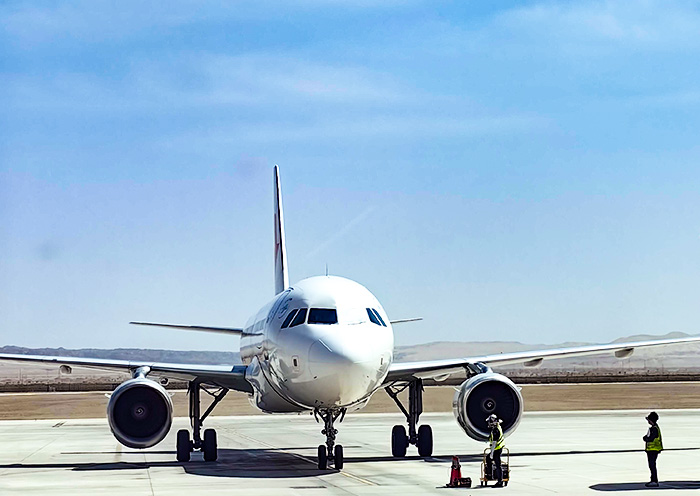
Lanzhou Beef Noodles (兰州牛肉面): Don't miss this local specialty known for its hand-pulled noodles served in a savory broth with tender slices of beef.
Camel Hoof on Silk Road (骆驼蹄): Try this exotic dish, a local delicacy that showcases the unique flavors of the region.
Zhangye Roast Lamb (张掖烤羊肉): Savor this succulent roast lamb, seasoned with local herbs and spices for a dish that's bursting with flavor.
Jiayuguan Glutinous Rice with Donkey Meat (嘉峪关驴肉黏米饭): Enjoy this hearty blend of sticky rice and tender donkey meat, a filling meal perfect after a day of sightseeing.
Dunhuang Yellow Noodles (敦煌黄面): Indulge in these thick noodles topped with a variety of hearty ingredients, a staple comfort food of the area.
Goji Berry Juice: The region around the Hexi Corridor is known for its goji berries. Try some fresh goji berry juice, which is not only refreshing but also packed with antioxidants.
Extend Your Hexi Corridor Tour
Embarking on a journey along the Hexi Corridor gives you a front-row seat to the dazzling diversity of the ancient Silk Road. To truly capture the spirit of this historic trade route, consider extending your trip to include a more comprehensive Silk Road experience, connecting major Chinese cities and beyond. You'll likely need about 8-21 days to do it justice.
From Hexi Corridor to a Complete Silk Road Experience
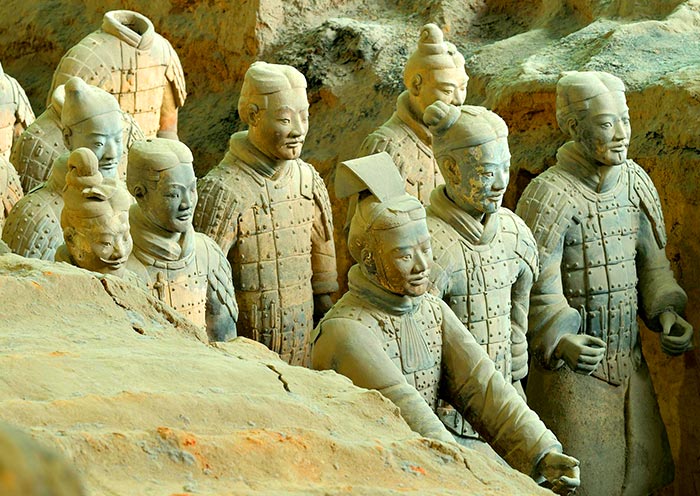
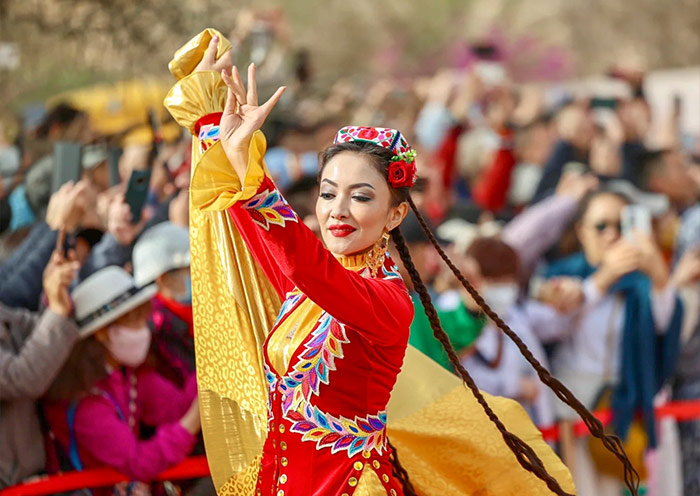
Xi'an (1-2 Days): Start or extend your tour at Xi'an, often considered the eastern terminus of the Silk Road. This city is rich with history, home to the famous Terracotta Army and the ancient city walls. Xi'an also offers a vibrant display of Silk Road cultural influences through its food, architecture, and museums.
Xinjiang (7-13 Days): Stretching your journey to Xinjiang connects you with the Silk Road's more rugged and remote paths. Key cities like Urumqi and Kashgar offer a mix of Uyghur culture, bustling bazaars, and significant sites like the Id Kah Mosque and the ancient city of Turpan. Xinjiang serves as a gateway to exploring further into Central Asia or looping back into more central parts of China.
Adding China's Main Cities to Your Silk Road Tour
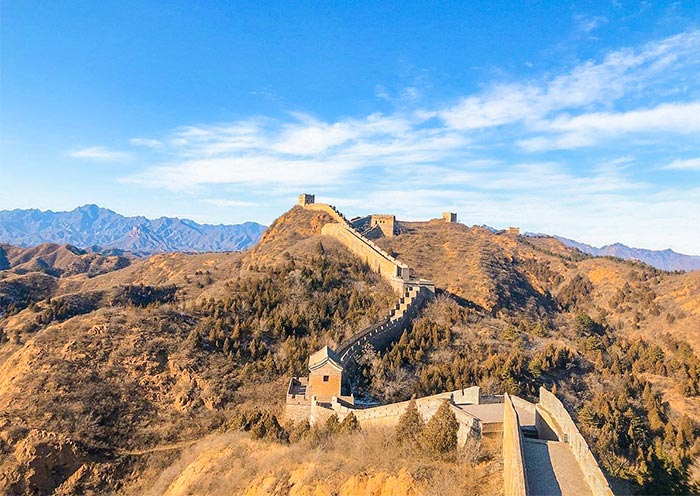
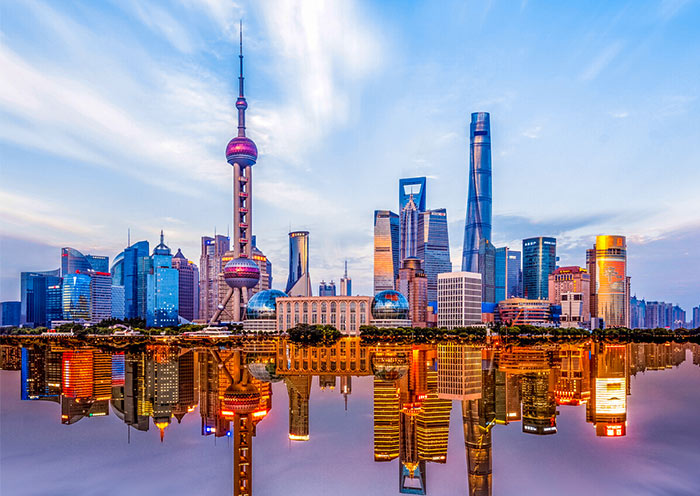
Beijing (3-5 Days): Although not directly on the traditional Silk Road, Beijing's historical sites like the Forbidden City, the Great Wall, and the Summer Palace provide insights into the power and culture of the empires that once promoted and protected the trade routes. Including Beijing adds a dimension of political and historical depth to your Silk Road journey.
Shanghai (1-3 Days): As a cosmopolitan hub, Shanghai showcases the modern end of the trade routes, where ancient paths meet contemporary global commerce and culture. Visiting places like the Bund, Yuyuan Garden, and the Shanghai Museum can help draw connections between past and present economic and cultural exchanges.
Chengdu (1-3 Days): Adding Chengdu to your itinerary allows exploration of the southern Silk Road routes. Famous for its spicy cuisine and as the home of the giant panda, Chengdu also offers access to the Sanxingdui Museum, which showcases relics from a Bronze Age culture that was contemporary with Silk Road traders.
Travel with Asia Odyssey Travel (AOT) to Explore Hexi Corridor, Gansu
Travel to Hexi Corridor with Asia Odyssey Travel (AOT) and discover the stunning treasures of the Silk Road in Gansu, China. With years of expertise in crafting tours in Northwestern China, AOT offers a variety of customizable tour packages that cater to all types of travelers.
Tour Packages: Dunhuang Tours, Gansu Tours, Silk Road Tours, Silk Road Group Tours, China Silk Road Tours, China Northwest Tours
Popular Attractions: Mogao Caves, Hexi Corridor
Gansu Destinations: Lanzhou, Dunhuang, Zhangye, Jiayuguan
Gansu Travel: Gansu Travel Guide, Gansu Travel Tips, Gansu Maps, Gansu Attractions, How to Plan a Gansu Tour
Silk Road Travel: Silk Road Travel Guide, Silk Road Cities, Silk Road Trip Planning Guide, Silk Road Itinerary, Silk Road Attractions, Silk Road Map, Silk Road Facts
